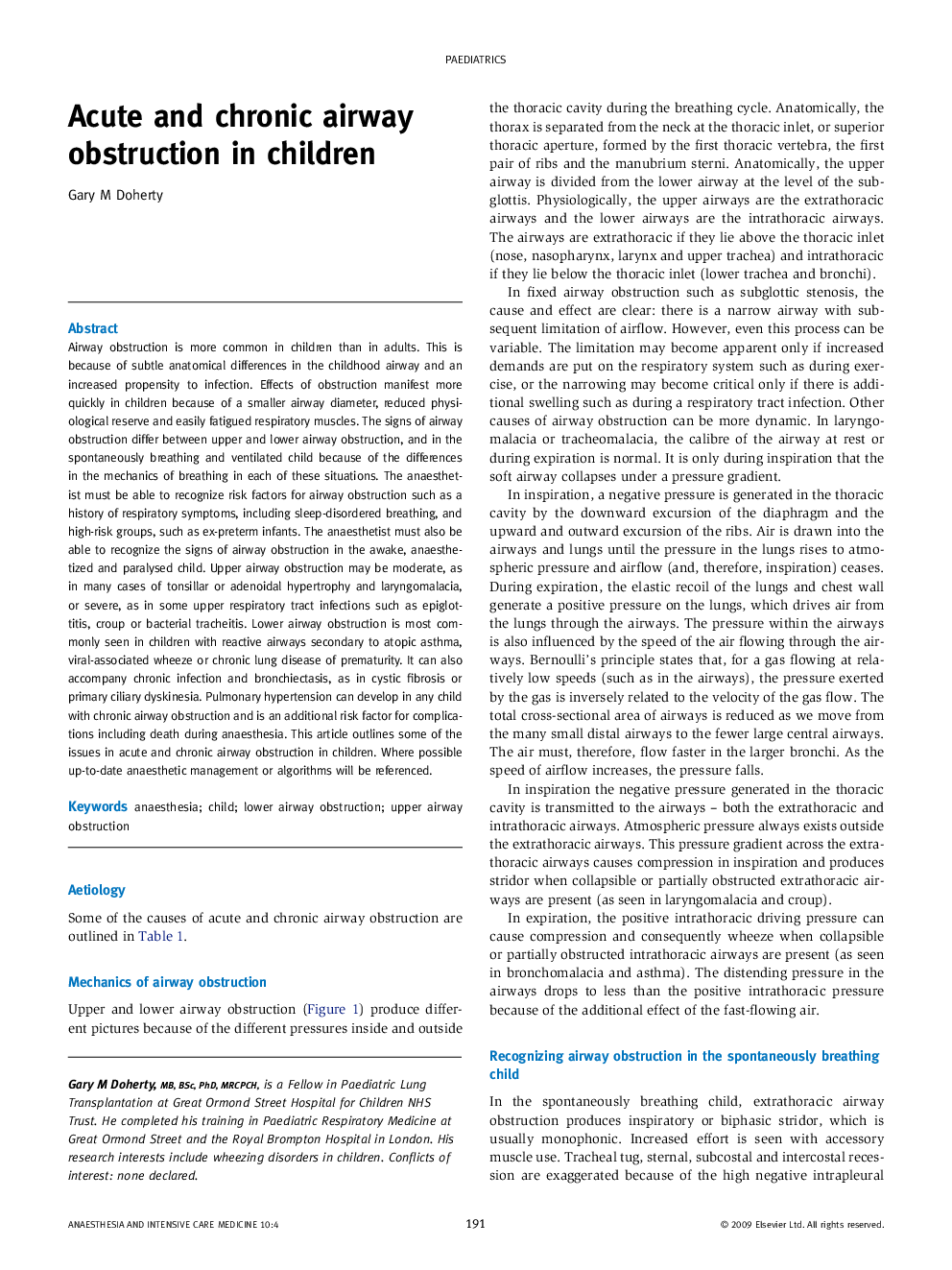| Article ID | Journal | Published Year | Pages | File Type |
|---|---|---|---|---|
| 2743658 | Anaesthesia & Intensive Care Medicine | 2009 | 5 Pages |
Airway obstruction is more common in children than in adults. This is because of subtle anatomical differences in the childhood airway and an increased propensity to infection. Effects of obstruction manifest more quickly in children because of a smaller airway diameter, reduced physiological reserve and easily fatigued respiratory muscles. The signs of airway obstruction differ between upper and lower airway obstruction, and in the spontaneously breathing and ventilated child because of the differences in the mechanics of breathing in each of these situations. The anaesthetist must be able to recognize risk factors for airway obstruction such as a history of respiratory symptoms, including sleep-disordered breathing, and high-risk groups, such as ex-preterm infants. The anaesthetist must also be able to recognize the signs of airway obstruction in the awake, anaesthetized and paralysed child. Upper airway obstruction may be moderate, as in many cases of tonsillar or adenoidal hypertrophy and laryngomalacia, or severe, as in some upper respiratory tract infections such as epiglottitis, croup or bacterial tracheitis. Lower airway obstruction is most commonly seen in children with reactive airways secondary to atopic asthma, viral-associated wheeze or chronic lung disease of prematurity. It can also accompany chronic infection and bronchiectasis, as in cystic fibrosis or primary ciliary dyskinesia. Pulmonary hypertension can develop in any child with chronic airway obstruction and is an additional risk factor for complications including death during anaesthesia. This article outlines some of the issues in acute and chronic airway obstruction in children. Where possible up-to-date anaesthetic management or algorithms will be referenced.
